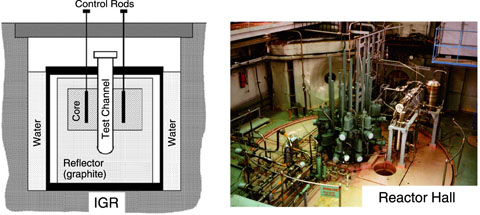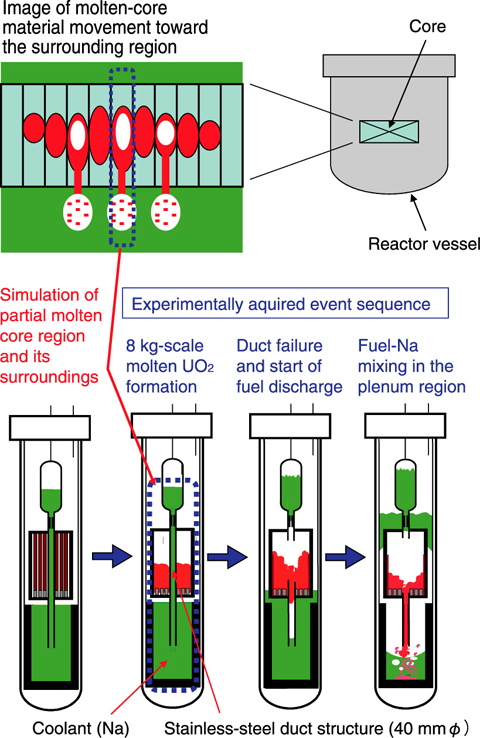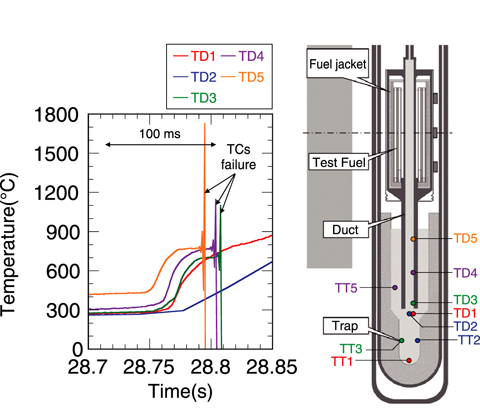
Fig.1-5 IGR and test channel

Fig.1-6 Molten core simulation concept in the experiments

Fig.1-7 An example of EAGLE test data
In the area of FBR safety research, experimental studies on molten core material behavior in a core-disruptive accident (CDA) have been conducted to confirm that the consequences can be appropriately mitigated, although the possibility of such accidents is extremely low. In conventional CDA evaluations, it is assumed that a large amount of molten fuel remains within the core region, creating the potential for significant power excursion with massive molten fuel movement. With next generation FBRs, however, the intention is to adopt early discharge of molten fuel from the core region (either upward or downward), introducing a duct structure within the fuel subassembly, and to demonstrate the effectiveness of this by experiments.
In collaboration with the National Nuclear Center of the Republic of Kazakhstan, JAEA is conducting the experimental project EAGLE utilizing IGR (Impulse Graphite Reactor). IGR has a central hole as illustrated in Fig.1-5 which can accommodate a test channel equipped with a double-layer pressure vessel enclosing fuel for testing. Four experiments producing approximately 8 kg of molten UO2 have been performed thus far, and these have provided information on how accidents progress (Fig.1-6). Fig.1-7 shows an example of the data obtained from the experiments. The data showing the response of the thermocouples, TD1 to TD5, placed within the duct, reveal downward movement of high-temperature material. In addition, the thermocouples TT1 to TT3 and TT5, placed in the lower trap, show that the high-temperature material reached to within the lower trap. Coupled with data from pressure gauges, microphones, and the like, the data allowed us to clarify the physical process. In this experiment, the process of duct failure and subsequent molten fuel discharge into the lower trap was implemented.
The JSFR design employs a duct structure option allowing upward fuel discharge, and experiments reflecting this design have also been conducted. Through this EAGLE experimental study with the duct structure, it has been confirmed that early escape of molten fuel prevents large molten fuel pool formation, and thus provides a perspective on how the consequences of accidents can be appropriately mitigated.